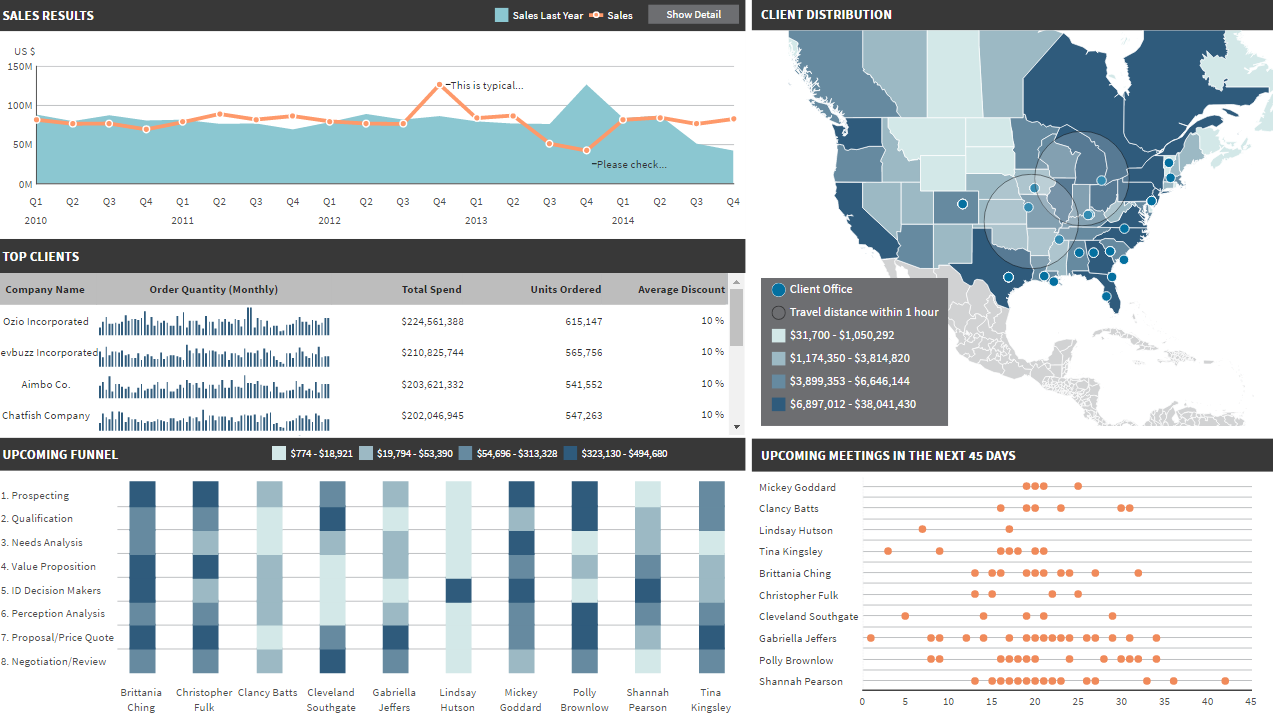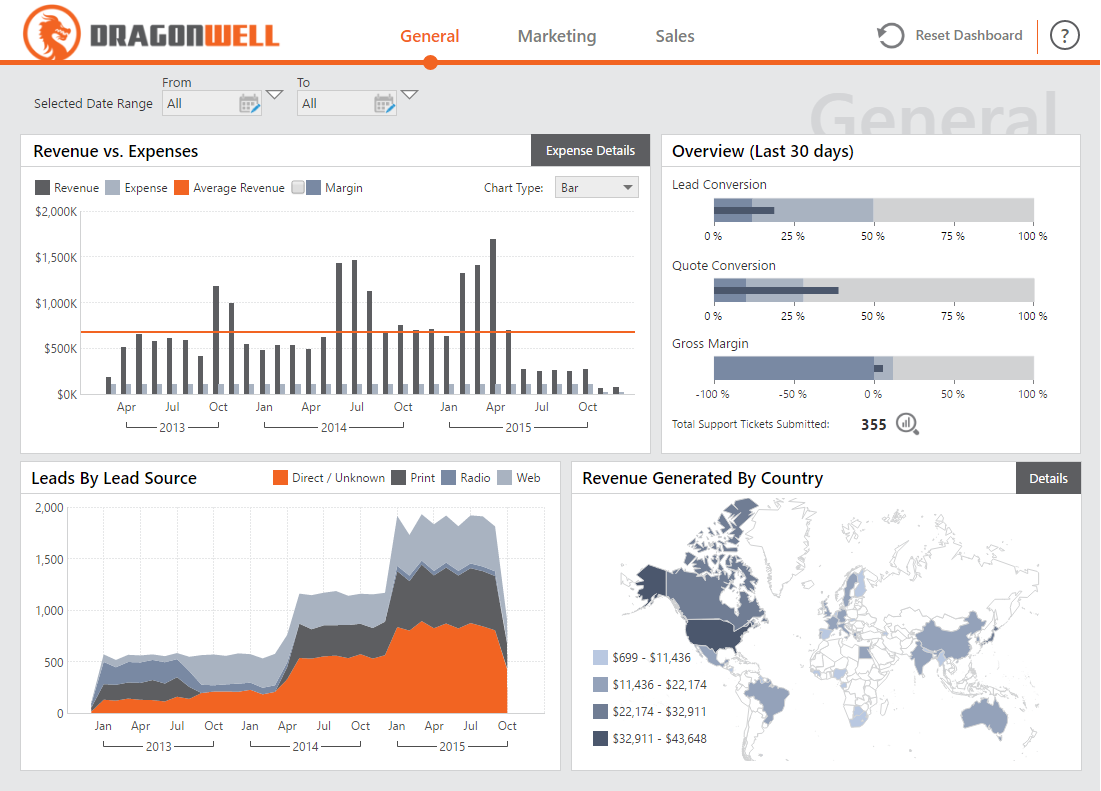It’s vital that sales teams are equipped with the right tools to properly analyze and interact with their data. A flexible business intelligence and data visualization solution, with tailored capabilities, will be able to help a sales team monitor performance, identify which sales techniques are working, and improve customer service, all while allowing them to discover new opportunities.
By having a centralized dashboard that allows sales teams to analyze, view and interact with the right data the way they want to; they’ll see an increase in alignment and collaboration, which will ease the identification of complex problems, transfer of expertise, and recognition of growth opportunities.
To help sales teams improve their performance, we’ve highlighted the top 4 ways business intelligence can supercharge sales strategies.
1. Pipeline Analysis
The buying process has changed, and sales has transitioned from art to science. Today, salespeople are able to quickly identify where prospects are in the sales cycle and can attribute a score to these leads. They are now able to better manage and organize their relationships with large quantities of prospects at very specific stages in their pipeline, and make superior, fact-based decisions. By separating their customers into pre-defined stages according to purchasing decision patterns, and weighting their value and expected purchase data accordingly, the sales team will be able to create more consistent, objective, accurate pipeline estimates.
By utilizing a business intelligence software, sales teams can create Sales Dashboards that hook directly into their CRM to provide up-to-the-minute pipeline analysis by salesperson and time period, allowing them to predict future sales without any manual calculation.

Figure 1 - Sample Funnel with Drill-Down Capabilities in Dundas BI
2. Sales Performance [Key Performance Indicators]
Your company’s profitability is based on a continuous flow of revenue based on new sales. Tracking sales activity, including the number of sales leads, meetings and deals closed on a monthly, quarterly, and yearly basis, ensures that your business is on the right track for increasing sales. In addition to this, tracking and reviewing sales activities on a regular basis can help your company identify and prevent trends that could potentially result in efficiency challenges, as well as identify new opportunities for incremental revenues.
A Sales Dashboard can provide sales managers with the tools to not only monitor and evaluate performance on a variety of dimensions, but to understand why your sales are growing in one area and shrinking in another. By identifying these Key Performance Indicators via data visualizations, sales managers will be better equipped to exercise to a greater degree, control over their teams.

Figure 2 - Sample Sales Dashboard in Dundas BI
3. Understanding Customer Needs
Customers are becoming increasingly more savvy and astute to accurately assessing the market, and have a greater understanding of what competitive offerings are available to them. With this increase in consumer power, a sales team has to do a better job of correctly understanding customer needs.
Business intelligence and sales dashboards can provide sales teams the ability to better understand and predict the behaviors of their customers. This can help sales teams to quickly and visually analyze customer survey data, market research results, and perform competitive analysis to better help them understand where their products and services stand in the market, how acceptable they are to customers, and the opportunities to create better offerings. By having a greater understanding of their customer’s needs, wants and behaviors, sales teams are more strongly positioned to not only service current customers and increase revenues, but also identify and influence new customers with greater ease and accuracy.
4. Marketing Campaign Effectiveness
Communication is essential to sales and marketing alignment. Lack of communication between these two parties can create a siloed environment, where information between both departments is withheld, and each side ends up complaining about performance; be it quality of leads, lack of support, commitment to campaigns, etc. Unfortunately, these grievances aren’t uncommon.
A flexible business intelligence solution has the collaborative tools to get your sales and marketing teams communicating more effectively. Dashboards can track marketing campaigns against sales amounts or inbound leads to help identify which campaigns are working, while embedded messaging tools allow your sales and marketing teams to discuss results directly on the dashboard. In addition to this, an effective BI solution is one that allows both divisions access to their data from anywhere, can be shared seamlessly between users, and offers a fully immersive and interactive experience.
Figure 3 - Sample Sales & Marketing Dashboard in Dundas BI
--
Business intelligence and analytics solutions that contain sales dashboard capabilities can transition an organization from a perception-based decision making culture (where behavior is influenced by a perception of reality), into one focused on tactical and strategic decision making, that is backed by real and accurate data. The business environment is rapidly changing, and whether or not your sales objectives include one or all of the above points, you’ll be better positioned to take a competitive stance when your actions are data-driven.
Try Dundas BI and see how easy it is to create intuitive, powerful dashboards and reports.



Follow Us
Support